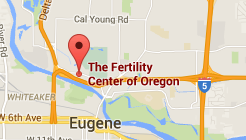Get Informed: Facts on Women and Heart Disease
 Heart disease is the leading cause of death for women in the United States.
Heart disease is the leading cause of death for women in the United States.
Although heart disease is sometimes thought of as a “man’s disease,” around the same number of women and men die each year of heart disease in the United States.
Some conditions and lifestyle choices increase a person’s chance for heart disease, including diabetes, overweight and obesity, poor diet, physical inactivity, and excessive alcohol use.
High blood pressure, high LDL (low-density lipoprotein) cholesterol, and smoking are key risk factors for heart disease. LDL is considered the “bad” cholesterol because having high levels can lead to buildup in your arteries and result in heart disease and stroke. Controlling your blood pressure and cholesterol, not smoking, and regular physical activity will reduce your chances for heart disease.
Symptoms
While some women have no symptoms of heart disease, others may experience heavy sharp chest pain or discomfort, pain in the neck/jaw/throat, or pain in the upper abdomen or back. Sometimes heart disease may be silent and not diagnosed until a woman has signs or symptoms including:
Heart Attack: Chest pain or discomfort, upper back pain, indigestion, heartburn, nausea/vomiting, extreme fatigue, upper body discomfort, and shortness of breath.
Arrhythmia: Fluttering feelings in the chest.
Heart Failure: Shortness of breath, fatigue, swelling of the feet/ankles/legs/abdomen.
Stroke: Sudden weakness, paralysis (inability to move) or numbness of the face/arms/legs, especially on one side of the body. Other symptoms may include confusion, trouble speaking or understanding speech, difficulty seeing in one or both eyes, shortness of breath, dizziness, loss of balance or coordination, loss of consciousness, or sudden and severe headache.

